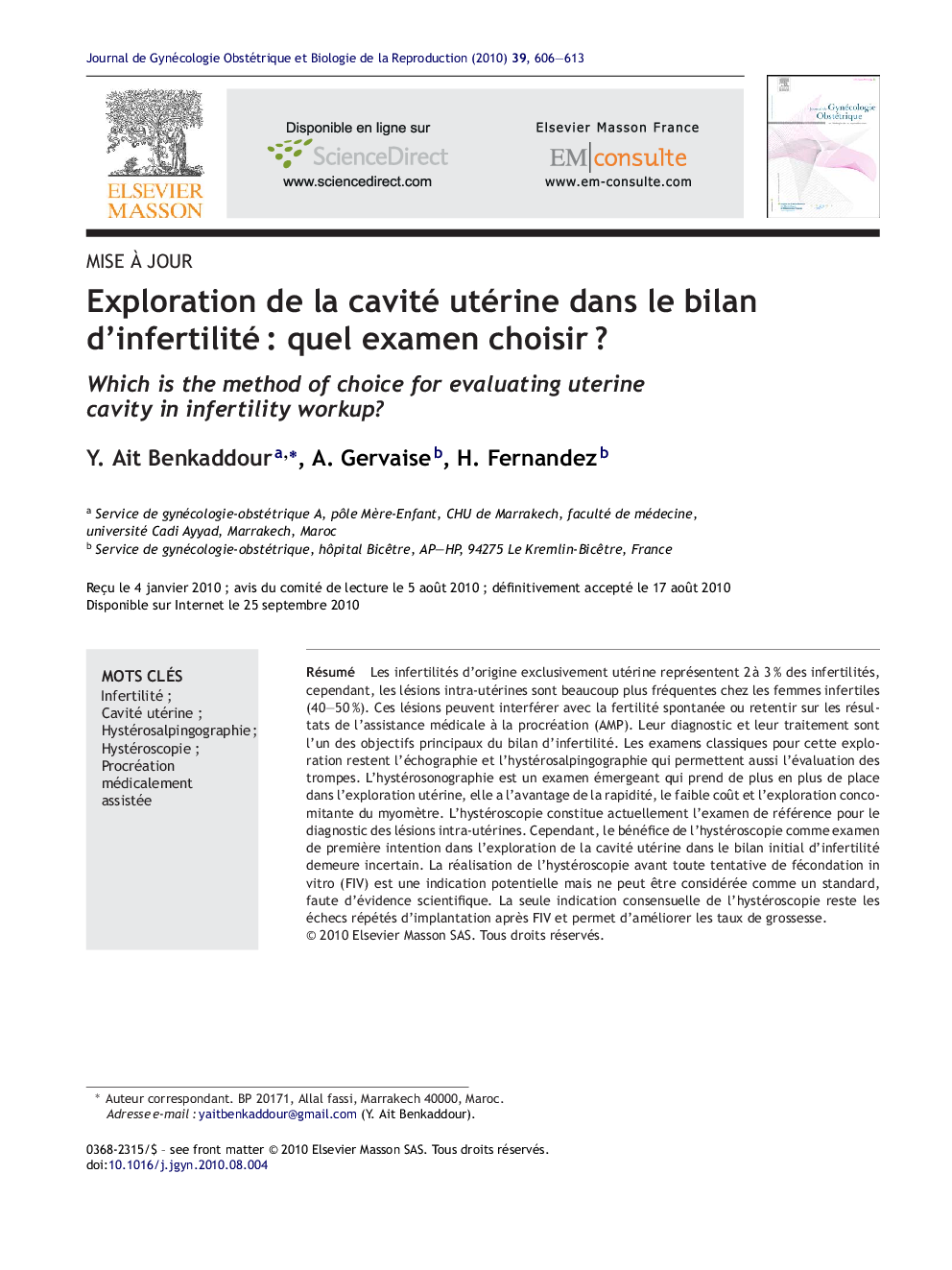| Article ID | Journal | Published Year | Pages | File Type |
|---|---|---|---|---|
| 3272948 | Journal de Gynécologie Obstétrique et Biologie de la Reproduction | 2010 | 8 Pages |
Abstract
Uterine factors represent only 2Â to 3Â % of infertility, but intra-uterine lesions are much more common in infertile women (40-50Â %). These lesions can interfere with spontaneous fertility and can compromise pregnancy rates in assisted reproduction. Exploration of the uterine cavity is actually one of the basic explorations in infertility workup. Classically, hysterosalpingography and transvaginal sonography are most communally used for this purpose. Hysteroscopy, with the development and miniaturization of equipment, is currently simple, outpatient cost-effective exploration and it is considered the gold standard for diagnosis of intrauterine lesions. However, the benefit of the systematic use of hysteroscopy in the initial assessment of infertility remains unclear and the exploration of the uterine cavity in the initial assessment of infertility should be based on hysterosalpingography or hysterosonography. Systematic hysteroscopy before IVF is widely accepted practice that is supposed to improve pregnancy rates but still lacks scientific evidence. After repeated implantation failure in IVF cycles, uterine cavity should be reevaluated by hysteroscopy and this practice has been demonstrated to improve pregnancy rates.
Keywords
Related Topics
Health Sciences
Medicine and Dentistry
Endocrinology, Diabetes and Metabolism
Authors
Y. Ait Benkaddour, A. Gervaise, H. Fernandez,
